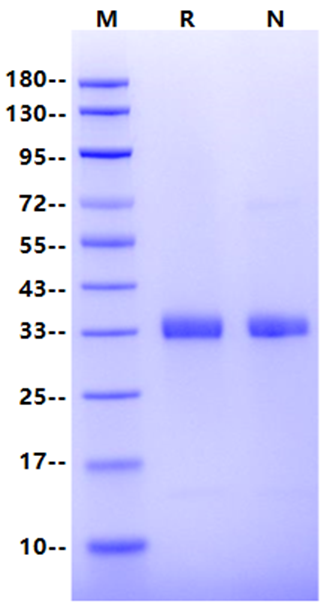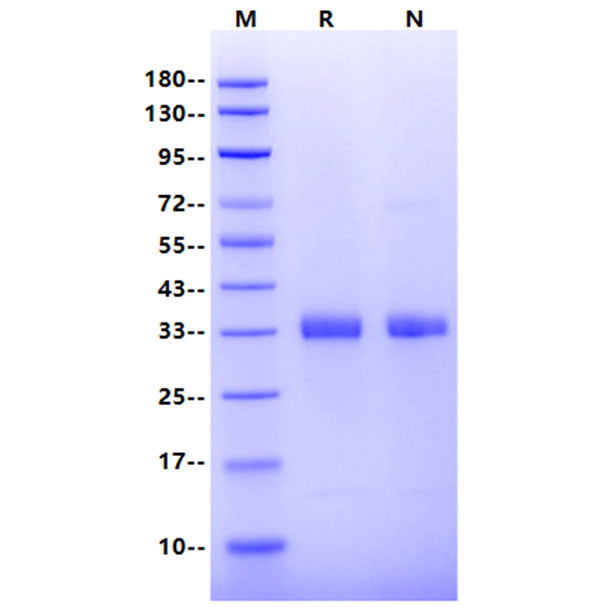Product Details
Product Details
Product Specification
| Species | Human |
| Synonyms | Prolactin R, PRLR, PRL-R |
| Accession | P16471 |
| Amino Acid Sequence | Gln25-Asp234, with C-terminal 8*His QLPPGKPEIFKCRSPNKETFTCWWRPGTDGGLPTNYSLTYHREGETLMHECPDYITGGPNSCHFGKQYTSMWRTYIMMVNATNQMGSSFSDELYVDVTYIVQPDPPLELAVEVKQPEDRKPYLWIKWSPPTLIDLKTGWFTLLYEIRLKPEKAAEWEIHFAGQQTEFKILSLHPGQKYLVQVRCKPDHGYWSAWSPATFIQIPSDFTMNDGGGSHHHHHHHH |
| Expression System | HEK293 |
| Molecular Weight | 32-36kDa |
| Purity | >95% by SDS-PAGE |
| Endotoxin | <0.1EU/μg |
| Conjugation | Unconjugated |
| Tag | His Tag |
| Physical Appearance | Lyophilized Powder |
| Storage Buffer | PBS, pH7.4 |
| Reconstitution | Reconstitute at 0.1-1 mg/ml according to the size in ultrapure water after rapid centrifugation. |
| Stability & Storage | · 12 months from date of receipt, lyophilized powder stored at -20 to -80℃. · 3 months, -20 to -80℃ under sterile conditions after reconstitution. · 1 week, 2 to 8℃ under sterile conditions after reconstitution. · Please avoid repeated freeze-thaw cycles. |
| Reference | 1、Bole-Feysot C. et al. (1998) Prolactin (PRL) and its receptor: actions, signal transduction pathways and phenotypes observed in PRL receptor knockout mice. Endocr Rev. 19(3): 225-268. |
Background
Prolactin receptor (PRLR) is a single-pass transmembrane receptor belonging to the type I cytokine receptor superfamily, and contains two fibronectin type-III domains. Knockout prolactin receptor gene (PRL-R) mice are animal models for prolactinomas and PRL acts via autocrine/paracrine inhibiting lactotroph proliferation. Recently, variants of the PRL-R were identified in prolactinoma patients and their frequency was higher compared to individuals from the genomic database. As a transmembrane receptor, the prolactin receptor (PRL-R) interacts with prolactin. The PRL-R also binds and is activated by growth hormone (GH) and human placental lactogen (hPL). Moreover, The PRLR has been found to be essential for lobuloalveolar maturation of the mammary glands during pregnancy, as evidenced by the fact that PRLR knockout mice show severely impaired development of lobuloalveolar structures.
Picture
Picture
SDS-PAGE

1μg (R: reducing conditions, N: non-reducing conditions).


